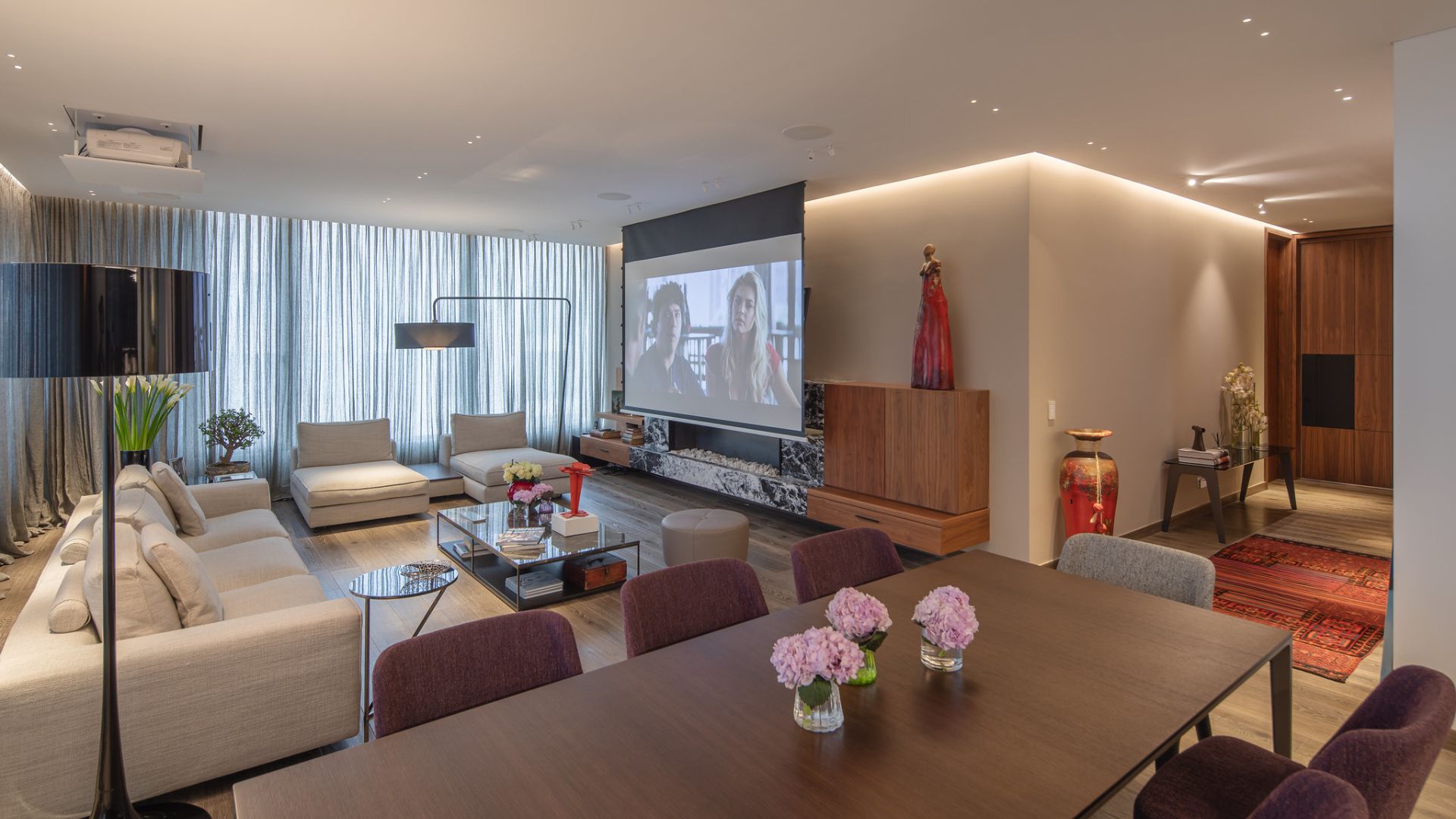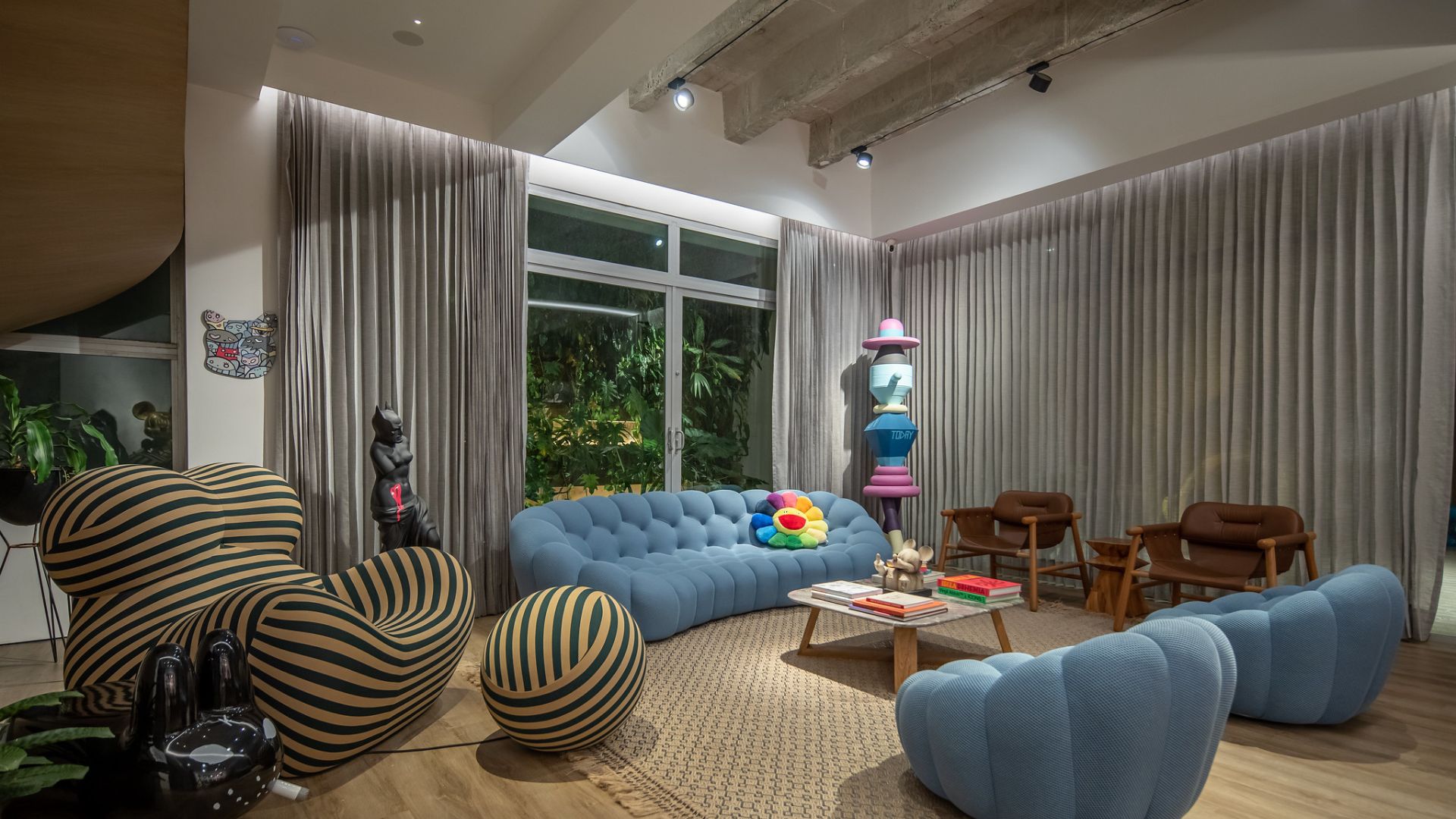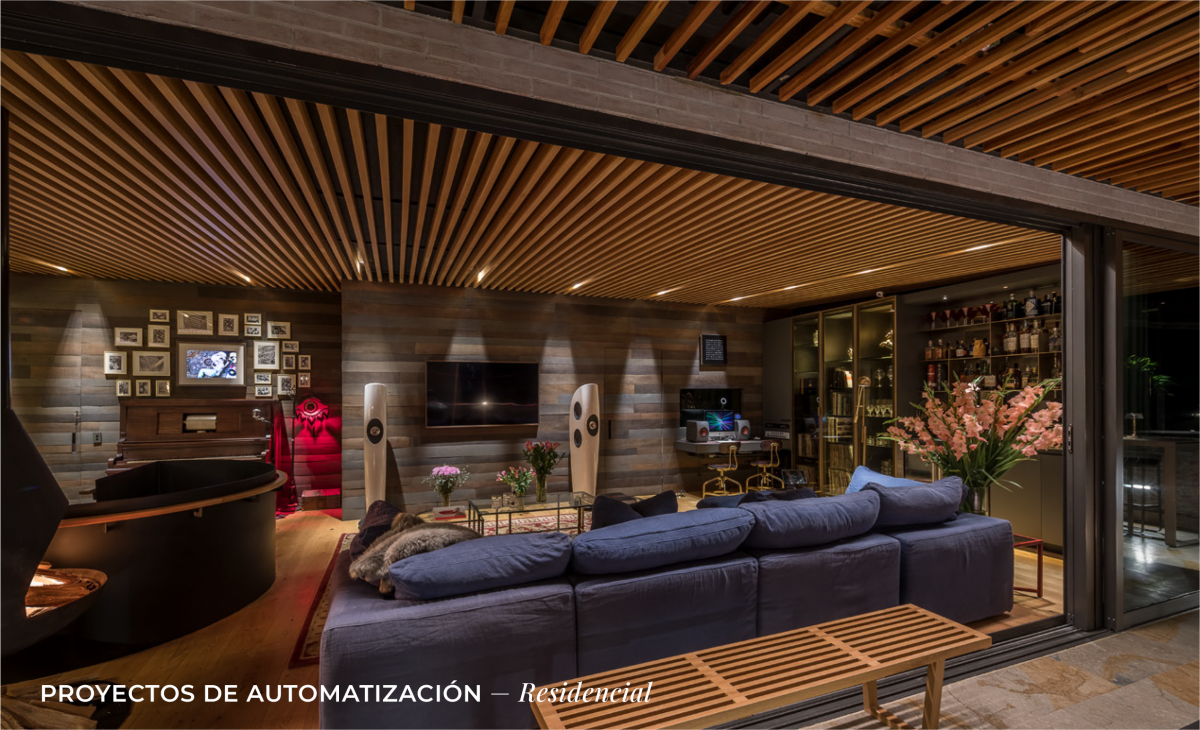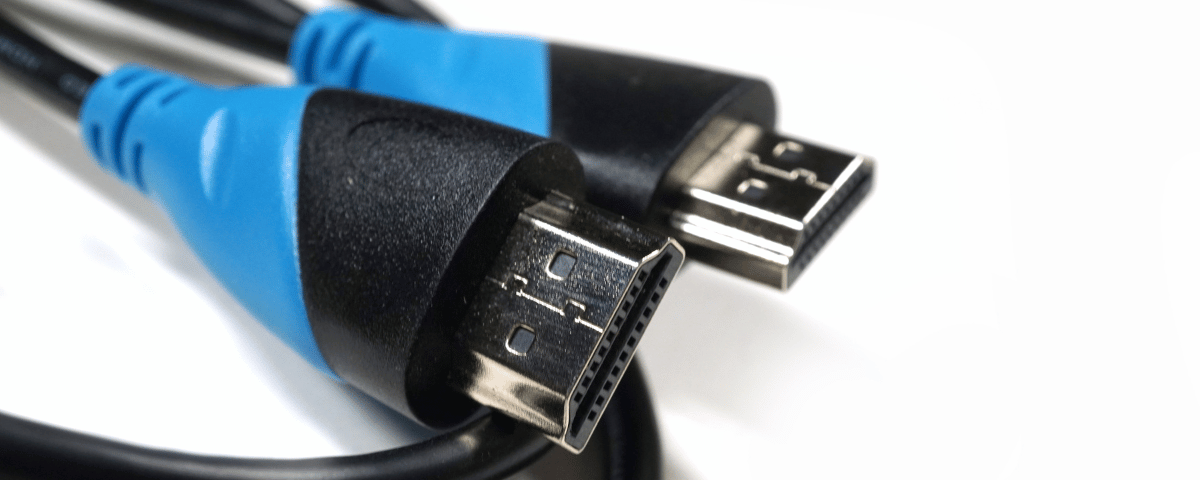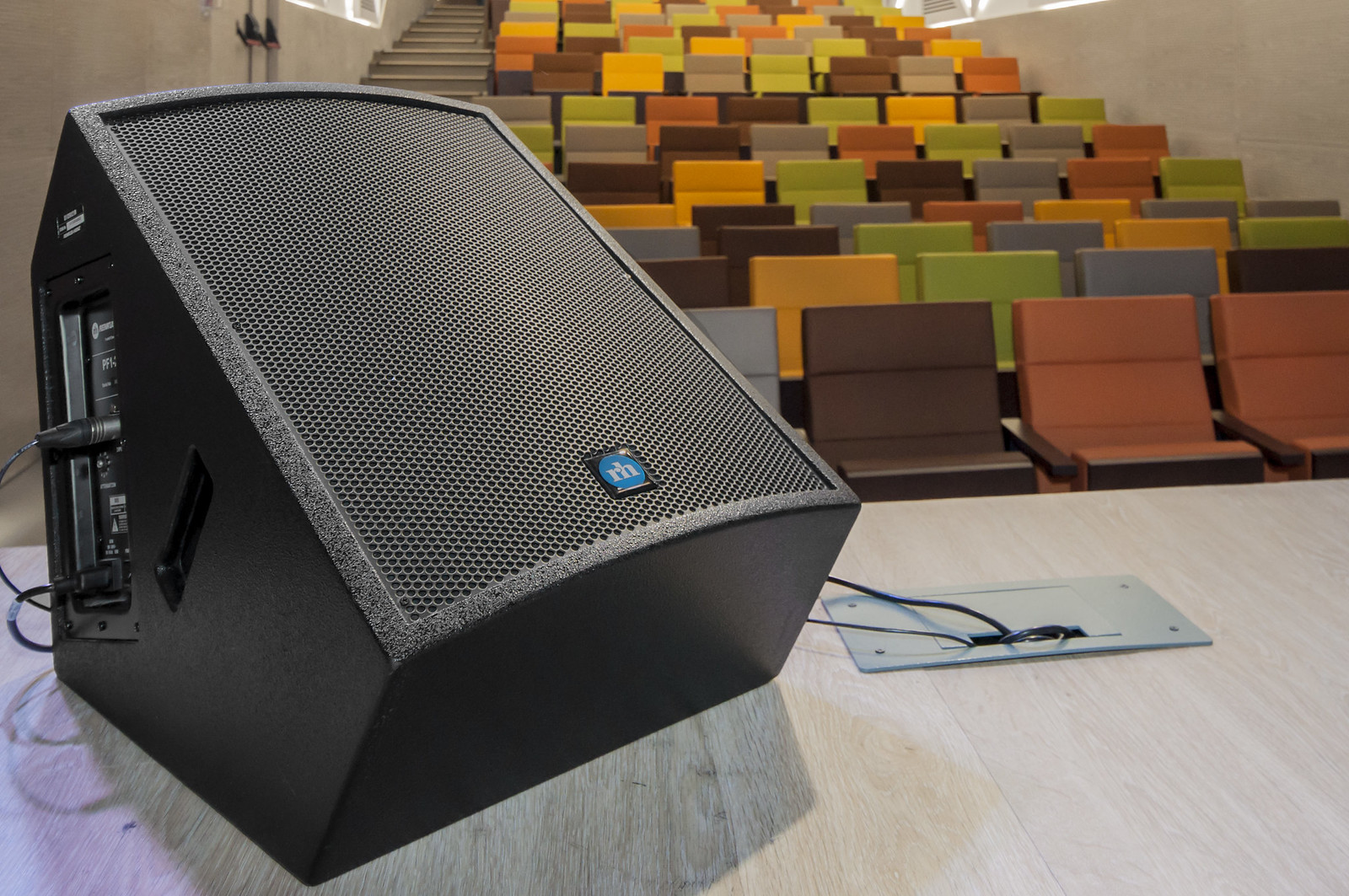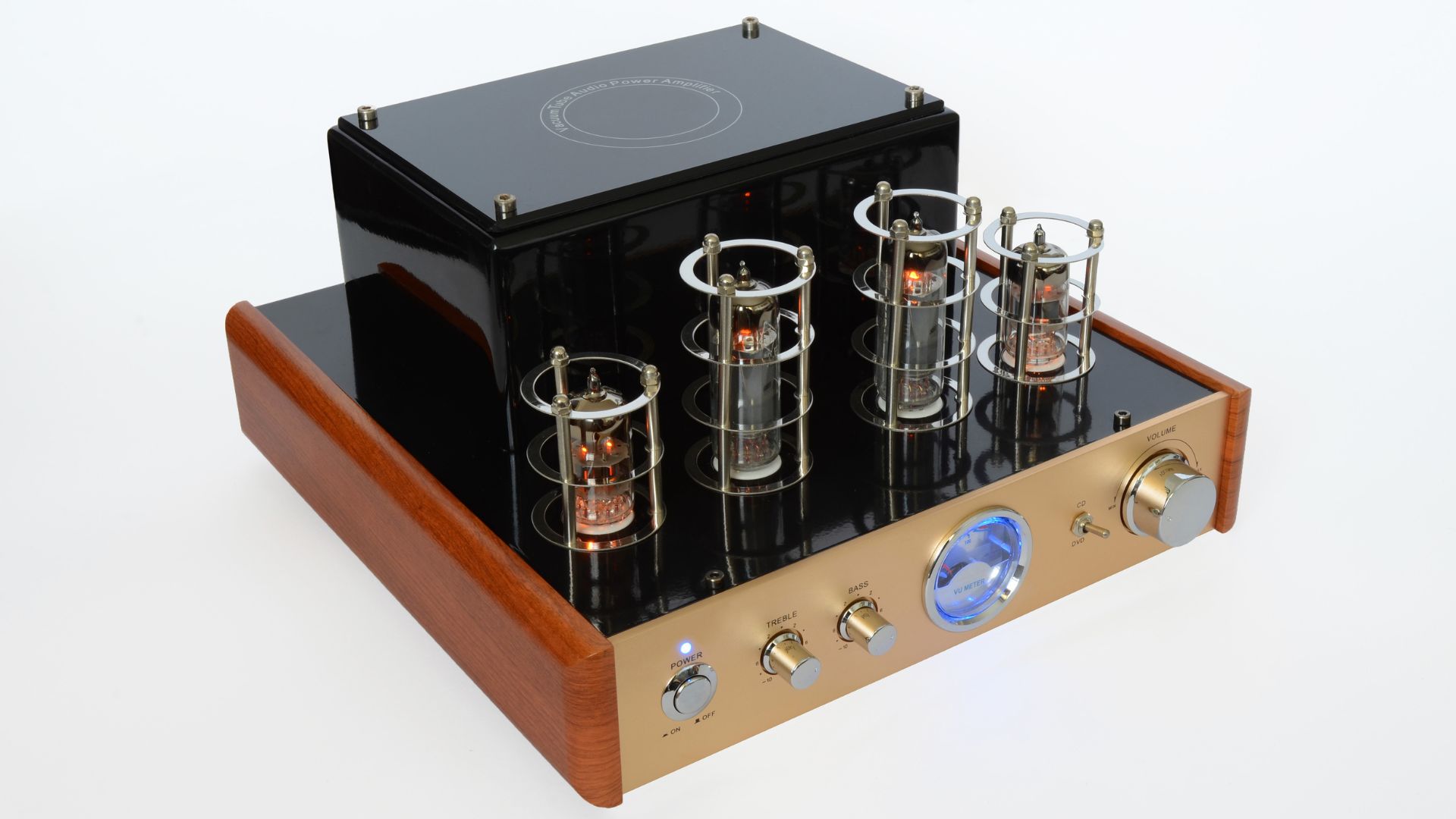Table of contents
- The Role of Subwoofers in Audio Systems
- Types of Subwoofers
- Factors to Consider When Choosing a Subwoofer
- How Subwoofers Enhance the Audio Experience
- Setting Up and Configuring a Subwoofer
- Common Mistakes to Avoid when Using a Subwoofer
- Maintaining and Troubleshooting Subwoofers
- The Future of Subwoofers
- Conclusion
- Frequently Asked Questions
When it comes to immersive audio experiences, subwoofers are the unsung heroes. They bring the bass, adding depth and dimension to music, movies, and games. We’ll dive deep into the world of subwoofers, exploring their types, how they work, and why they’re essential for any serious sound system.
Choosing the right subwoofer can be a game-changer for your audio setup. Whether you’re a home theater enthusiast or a music aficionado, understanding the nuances of these powerful devices is key. We’re here to guide you through everything you need to know.
At Schaller Design Lab, we specialize in bringing your audio visions to life. If you’re looking to enhance your project with the perfect subwoofer or need expert advice on your setup, we’ve got you covered. We work with projects worldwide, offering design advice and top-notch equipment solutions. Don’t hesitate to reach out for a consultation—we’re here to help you hit the right notes.
The Role of Subwoofers in Audio Systems
Whenever we’re setting up audio systems, we often overlook the impact subwoofers have on the overall sound quality. Yet, these powerful components are pivotal in delivering a complete audio experience. They’re designed specifically to reproduce the low-frequency sounds, also known as bass, which are crucial for full, rich audio.
Subwoofers bring several benefits to an audio system:
- Depth and Dimension: Without a subwoofer, most speakers can’t adequately handle lower frequencies. The addition of a subwoofer adds that necessary depth, allowing us to hear every beat and sound effect as intended.
- Reduced Distortion: Low frequencies can be demanding on speakers, causing distortion in mid and high ranges. By handling the bass, subwoofers alleviate strain from the other speakers, resulting in a clearer sound.
- Enhanced Immersion: Whether we’re watching a movie or listening to music, we want to feel immersed. Subwoofers make soundtracks come alive, providing an encompassing experience that you can feel.
Understanding the workings of subwoofers gives us insight into their critical role. They contain several components that work together to produce low frequencies:
- Driver: The main element that moves air to create sound.
- Enclosure: The box-like structure which enhances the driver’s efficiency.
- Amplifier: Powers the driver and can be built-in or separate depending on the subwoofer type.
When integrating a subwoofer into our audio system, placement becomes key. It affects how sound waves travel through the room and interact with other surfaces. We’ve found that the location can often have as much impact on sound quality as the device’s specs.
Optimum placement strategies include:
- Corner placement to amplify power and depth
- Subwoofer crawl technique to determine an ideal spot based on acoustics
- Avoiding direct placement against walls to prevent sound reflecting issues
By understanding the role of subwoofers, we can optimize our audio systems to achieve an unparalleled sound experience.
Types of Subwoofers
Sealed Subwoofers
Sealed subwoofers, also known as acoustic suspension subwoofers, are characterized by their enclosed design. The tight air inside the sealed cabinet ensures that sound waves from the back of the speaker don’t interfere with those coming from the front. This setup has a few definitive benefits. The most significant advantage is the tighter and more accurate bass response. We find that sealed subwoofers excel in producing precise, deep bass because the air inside the box acts as a shock absorber, which controls the woofer’s movement. This results in less boominess and more clarity. But, they generally require more power to achieve higher volume levels compared to ported subwoofers.
Ported Subwoofers
Ported subwoofers, or bass reflex subwoofers, feature a design that includes one or more ports, or openings, that release air generated by the woofer’s rear movement. This design creates an enhanced bass response at lower frequencies and typically allows for louder sound output with less power compared to sealed models. The air moving through the port reinforces the bass, essentially giving you more boom for your buck. It’s the type of bass that you can feel as much as hear, making ported subwoofers a popular choice for home theater systems and environments where capturing the intensity of sound is key. They do have a larger physical footprint though due to the need for additional cabinet space to accommodate the port.
Factors to Consider When Choosing a Subwoofer
Power Handling
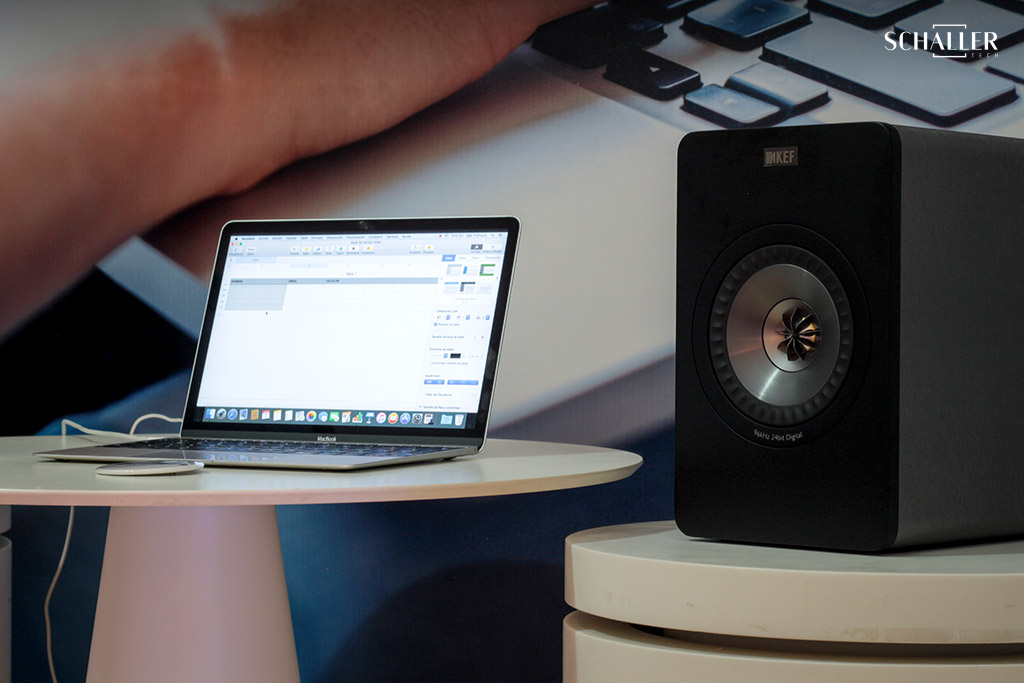
A laptop and a KEF speaker set up on a white table, showcasing a modern and minimalist audio setup.
When it comes to subwoofers, power handling is a critical spec to gauge a sub’s capabilities. RMS power rating reflects the amount of continuous power a subwoofer can handle, while peak power indicates the maximum power it can manage in short bursts. Always match the subwoofer’s RMS rating with your amplifier’s output to avoid damage and ensure long-lasting performance. Overpowering leads to distortion and potential harm, whereas underpowering won’t bring out the sub’s full potential.
Frequency Response
The frequency response of a subwoofer is the range of sound it can reproduce, typically measured in hertz (Hz). A wider frequency response means the sub can deliver deep lows and higher bass tones. For a robust audio experience, we look for a subwoofer that boasts a low-end frequency response, often starting around 20Hz to 30Hz. This ensures that those low-frequency effects in movies and the depth in music tracks are not just heard, but felt.
Enclosure Type
The enclosure of a subwoofer greatly influences its sound output and quality. Sealed enclosures offer precise and clear bass but require more power, while ported enclosures provide more volume and efficiency with less power but could sacrifice some sound accuracy. The choice between sealed and ported subwoofers hinges on personal preference and the intended use—whether it’s for critical listening or for a room-shaking home theater experience.
Size and Placement
Subwoofer sizes can range from compact 8-inch models to massive 15-inch units, affecting not just the physical footprint but also the sonic impact. Larger subwoofers generally produce deeper bass, but we don’t overlook the importance of proper placement. By strategically positioning the subwoofer in a room, we can optimize bass distribution and minimize nulls or peaks in response. Corner placement can amplify the bass, and multiple subwoofers can be deployed to even out the sound across the listening area.
How Subwoofers Enhance the Audio Experience
Subwoofers are pivotal in creating a fully immersive audio scenario. They manage the lower frequencies, typically below 80 Hz, that standard speakers struggle to reproduce. These low tones are not just heard but felt, adding a physical dimension to the audio experience. Whether it’s the rumble of thunder in a movie or the deep bass in a musical track, subwoofers bring these sounds to life, making them more tangible and realistic.
In a home theater setup, subwoofers complement the work of other speakers by taking over the task of producing low-pitched audio frequencies. This separation allows the other speakers to focus on mid and high-range frequencies. As a result, there’s less distortion and clearer sound quality across the board. The individual instruments and voices are more discernible, and the overall audio has a more three-dimensional character.
The impact of subwoofers on music cannot be overstated. They provide depth and richness to music, which flat speakers can’t match. With a subwoofer, the bass isn’t just an afterthought—it becomes a core component of the listening experience. All genres, from classical to hip-hop, benefit from the nuanced lows that subwoofers deliver.
Also, the integration of a subwoofer in an audio system allows listeners to experience audio the way the creators intended. Movie directors and music producers create soundtracks that have layers of audio; subwoofers ensure that every layer is heard. The explosion in an action film or the subtlety of a double bass in a jazz piece is felt with the same intensity as designed by the sound engineers.
For audio enthusiasts, investing in a subwoofer is a game-changer. With their power to render precise and enveloping bass, subwoofers make an essential contribution to the audio experience. They don’t just play sound; they convey feelings and create a resonant atmosphere that standard speakers alone simply can’t achieve.
Setting Up and Configuring a Subwoofer
Placement in the Room
When we set up a subwoofer, its placement is crucial for optimal performance. We’ve learned that corner placement often amplifies the bass, but this can sometimes lead to uneven distribution of low frequencies. To avoid this, we place the subwoofer equidistant from two walls to create a smoother bass response. Experimenting with the subwoofer’s spot by following the subwoofer crawl technique is an effective way to pinpoint the ideal location. This involves placing the subwoofer at our listening position and crawling around the perimeter of the room while the bass is playing to find where it sounds best.
Connection to the Audio System
After positioning the subwoofer, we connect it to the audio system. Most modern AV receivers have a dedicated LFE (Low-Frequency Effects) channel output which makes the process straightforward. We ensure a secure connection using either RCA cables for a single mono input or Y-cables for stereo inputs, if our subwoofer has two RCA jacks. For older systems without an LFE output, we connect the subwoofer in-series with the main speakers, using high-level connections that tap into the speaker’s terminals.
Adjusting the Crossover Frequency
The crossover frequency is a critical setting for blending the subwoofer sound with the main speakers. We don’t want frequencies to overlap since this can muddy the sound. Most AV receivers have a built-in low pass filter that we set to match the size and capability of our main speakers. Generally, smaller speakers benefit from a higher crossover frequency, typically around 80-100 Hz, while larger speakers can handle a lower threshold. We adjust this setting until the transition between the main speakers and the subwoofer becomes indistinguishable, ensuring a coherent audio experience.
Balancing the Subwoofer with the Main Speakers
Achieving the perfect balance between the subwoofer and main speakers requires finesse. We start by adjusting the subwoofer’s volume level to match our main speakers. This isn’t about making the bass as loud as possible; it’s about finding the level where the subwoofer complements the overall sound. We pay attention to certain tracks known for their deep bass to make sure they’re felt rather than overwhelming. Also, we use our AV receiver’s room calibration feature to automatically adjust the speaker levels for uniform sound throughout the space. Manual tweaking, combined with this technology, ensures the subwoofer integrates seamlessly with our audio system.
Common Mistakes to Avoid when Using a Subwoofer
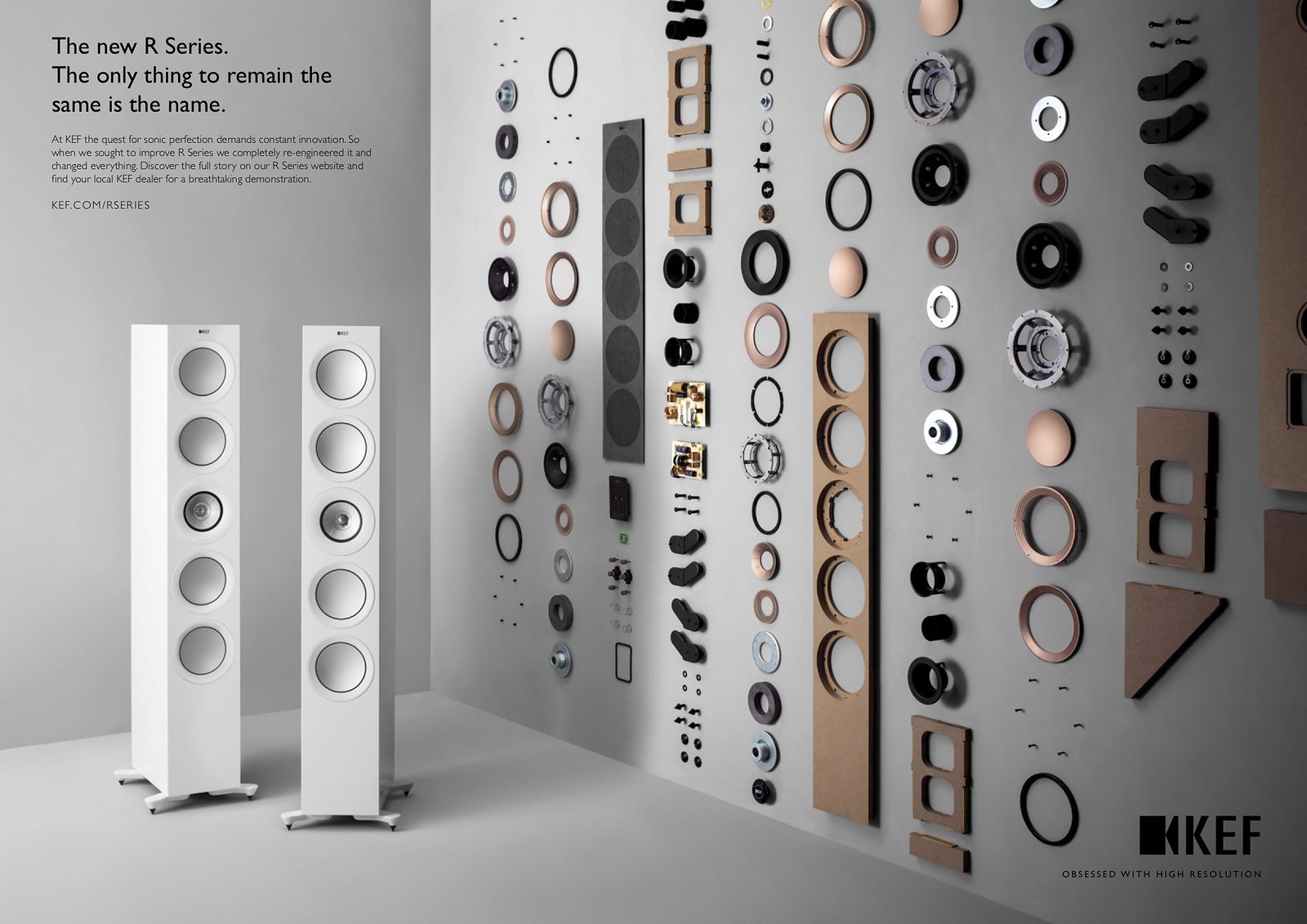
The new R Series by KEF showcasing two modern, sleek, and tall white speakers, representing the obsession with high resolution audio.
Having discussed how to set up and configure a subwoofer, we must also acknowledge the pitfalls that can hinder its performance. Even the best audio setups can fall victim to simple errors that drastically reduce audio quality. Let’s address some of these common mistakes to ensure that our subwoofers deliver the most immersive sound experience possible.
Setting the Volume Too High
A prevalent misconception is that subwoofers are exclusively for producing ground-shaking bass. In reality, they’re designed to complement, not overpower, the main speakers. Cranking the volume too high results in a boomy and distorted sound. We aim to achieve a balance where the subwoofer enriches the overall sound without drawing attention to itself. The rule of thumb is that the subwoofer should blend seamlessly into our audio experience, felt rather than heard.
Frequency Cut
Understanding the crossover frequency is crucial for subwoofer performance. When set incorrectly, it either robs the system of its low-frequency effects or creates an overlap that muddies the sound. The optimal frequency cut depends on the capabilities of our main speakers. Smaller speakers with limited low-frequency response typically require a higher crossover setting around 100-120 Hz. On the other hand, larger speakers with good bass extension could go as low as 80 Hz.
Poor Placement
Subwoofer placement is sometimes underestimated, yet it has a profound effect on sound quality. Just pushing a subwoofer into a corner or against a wall might make it convenient, but these positions can cause booming. We experiment with various locations in the room—a technique known as “subwoofer crawl”—to determine where low frequencies sound the most natural and even. Ideal placement often defies intuition and demands trial and error to identify the sweet spot.
Neglecting Room Acoustics
Our room’s acoustics play a vital role in shaping subwoofer performance. Failing to account for the way sound waves interact with the room can lead to a bass response that’s either boomy or weak. Materials like carpeting and soft furnishings typically absorb sound, while bare walls and hard floors reflect it. The resulting standing waves can drastically affect our listening experience. We take the time to assess the acoustics and add treatments such as bass traps or acoustic panels where necessary to control these effects and achieve optimal sound distribution.
Maintaining and Troubleshooting Subwoofers
Cleaning and Dusting
Dusting off our subwoofers regularly is key to maintaining their performance. Dust can accumulate quickly and not only affect the subwoofer’s appearance but also potentially interfere with its functionality. Frequency is vital; we aim to clean our subwoofers at least once a week to prevent build-up. For the external surfaces, a microfiber cloth does the trick, gently removing dust without scratching the finish. Internal components are more delicate, so it’s best to use compressed air to blow dust away without touching the components directly.
Checking for Loose Connections
Over time, connections in our subwoofer system might become loose due to vibrations or regular wear and tear. To ensure everything’s running smoothly, it’s important to periodically check all cables and connectors. We ensure the power is turned off before re-securing any loose connections to avoid any accidents. RCA cables, speaker wires, and power cords get our attention, and we make sure they’re not only secure but also free from damage or fraying. Resolving these issues immediately helps prevent potential sound quality problems or equipment failure.
Identifying and Fixing Common Issues
There are a few common issues that we can easily identify and rectify to keep our subwoofers performing at their best. Here’s what we often look out for:
- Distortion: Usually due to setting the volume too high or a problem with the audio source.
- No Sound: Could be as simple as checking that the subwoofer is turned on and plugged in or that the input selection is correct.
- Humming or Buzzing: Often a grounding issue, can sometimes be resolved by ensuring cables are correctly connected or by using a ground loop isolator.
For each of these, our first step is to isolate the problem by checking the subwoofer’s settings, cables, and connections. If these aren’t the culprits, we might investigate into more specific troubleshooting, like examining the audio source or adjusting the crossover settings. Remember, tackling these issues when they first arise prevents them from becoming bigger headaches down the road.
The Future of Subwoofers
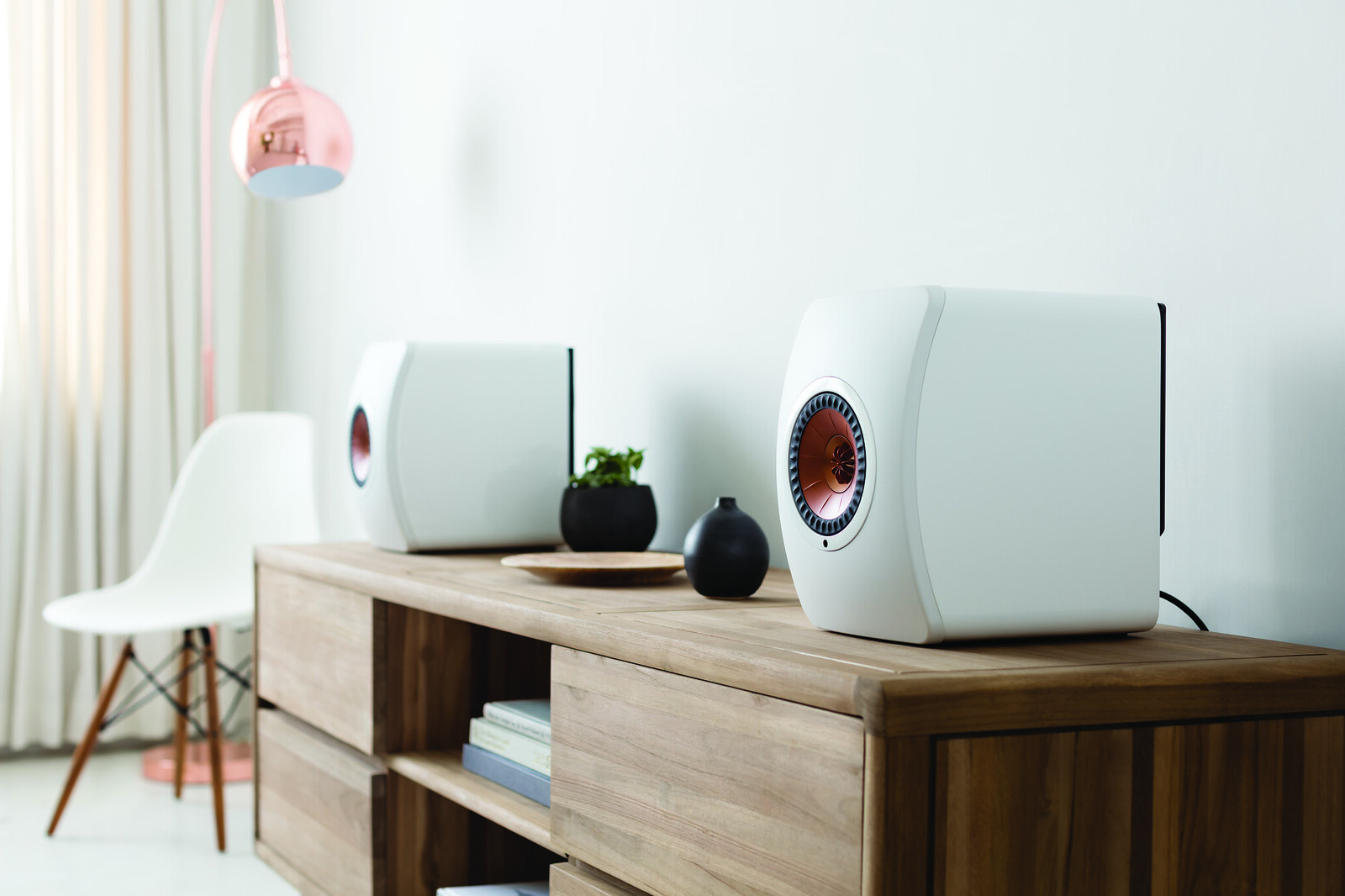
A modern, minimalist living room featuring white speakers on a wooden console table, showcasing a stylish and contemporary audio setup.
Subwoofer technology has surged forward over recent years, and the trajectory for innovation remains promising. Advancements in digital signal processing and power efficiency are paving the way for Smarter Subwoofers. These next-generation devices can actively adjust their output to match the acoustics of a room, resulting in a more precise and impactful bass experience.
Diving into the specifics, Wireless Connectivity has become a standard feature, allowing for easier integration into home theater systems without the clutter of cables. The use of advanced materials in subwoofer construction also contributes to better sound quality and durability.
Sustainability is now a driving force in subwoofer production. Manufacturers are adopting eco-friendly practices and materials, striving to reduce the carbon footprint of their products. This includes the development of subwoofers using recycled materials without compromising audio quality.
An exciting development on the horizon is the incorporation of Artificial Intelligence (AI) into subwoofers. This AI would analyze listening habits and preferences to optimize performance for each individual user. The table below outlines the key points of growth in subwoofer technology:
| Key Growth Area | Description |
|---|---|
| Smart Adjustment | Subwoofers that adjust to room acoustics for enhanced audio |
| Wireless Capability | Elimination of cables for a cleaner setup |
| Eco-Friendly Designs | Use of sustainable materials in production |
| AI Integration | Personalized listening experiences through machine learning |
In the area of Home Automation, subwoofers are increasingly becoming part of interconnected smart home systems. This allows for seamless control of all home audio equipment, including subwoofers, through a single interface, usually a smartphone or a voice-controlled assistant.
Investment in R&D is crucial for maintaining the evolution of subwoofers. Innovators are focusing on creating units that are both more powerful and compact. This focus not only enhances user experience but also broadens the range of applications for subwoofers, from professional studios to portable, personal devices.
Given trends in consumer electronics, it’s evident that subwoofers are advancing in tandem with broader technologies, ensuring that deep, resonant bass will continue to enrich our audio experiences for years to come.
Conclusion
We’ve seen how subwoofers are evolving with cutting-edge technology, paving the way for an immersive audio experience. They’re becoming more intelligent, efficient, and integrated into our smart homes, ensuring they’re not just heard but also seamlessly blend into our daily lives. With ongoing research and development, we’re on the brink of experiencing audio that’s not only heard but felt, tailored precisely to our environments and preferences. Let’s embrace the sound of the future with these innovative subwoofers that promise to elevate our listening to new depths.
Frequently Asked Questions
What is the main focus of the article?
The article focuses on the innovations and future trends in subwoofer technology, discussing digital signal processing, power efficiency, wireless connectivity, advanced materials, and eco-friendly designs.
How are modern subwoofers enhancing the listening experience?
Modern subwoofers enhance the listening experience by using digital signal processing to adjust their output to the room’s acoustics, potentially integrating AI to personalize settings, and improving power efficiency for better performance.
What advancements in subwoofer technology does the article mention?
The article mentions advancements like digital signal processing, wireless connectivity, the use of advanced and eco-friendly materials, and the potential integration of AI into subwoofer technology.
Are subwoofers becoming a part of smart home systems?
Yes, the article indicates that subwoofers are increasingly being integrated into smart home systems, becoming a more connected and interactive component of home entertainment.
Why is investment in research and development important for subwoofer evolution?
Investment in research and development is crucial for the continued evolution of subwoofers to drive innovation, create smarter and more efficient designs, and ensure the integration of the latest technologies.
Our Portfolio
Table of contents
- The Role of Subwoofers in Audio Systems
- Types of Subwoofers
- Factors to Consider When Choosing a Subwoofer
- How Subwoofers Enhance the Audio Experience
- Setting Up and Configuring a Subwoofer
- Common Mistakes to Avoid when Using a Subwoofer
- Maintaining and Troubleshooting Subwoofers
- The Future of Subwoofers
- Conclusion
- Frequently Asked Questions


